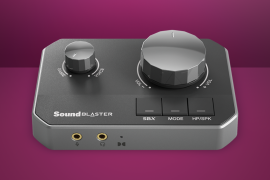FiiO R9 review: the ultimate desktop Hi-Fi experience
An auditory Swiss Army Knife that delivers on all fronts, with a premium price tag to match
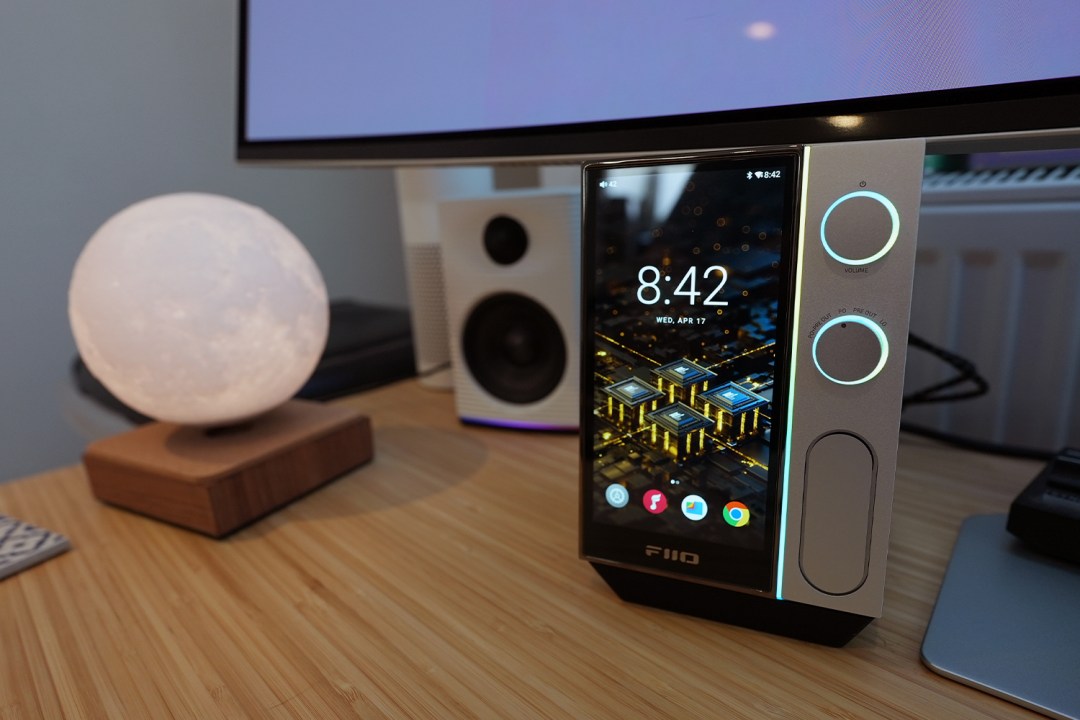
Stuff Verdict
A superb, do-it-all audio powerhouse that sounds as good as it looks. The FiiO R9 is expensive, but does it all.
Pros
- Premium, compact design
- Rich, crisp, balanced, and detailed sound
- Rammed with features and connectivity options
Cons
- May be more features than you need
- Can’t power passive speakers
Introduction
Are you looking for a headphone amp? How about a USB-DAC for your computer, a replacement for an ageing home Hi-Fi, or a wireless music streamer? Would you also like to play local music files? If you found yourself vigorously nodding your head with ever-increasing enthusiasm, you’ll be delighted to hear the feature-packed FiiO R9 covers all of these needs. And more.
It’s also a heck of a looker, with a cracking design and a generously sized touchscreen — all the better to interact with its full-fat Android interface. But at $1499/£1400, it’s far from impulse buy territory. Is it worth considering if you need a do-it-all device that delivers on performance, usability, and styling? I’ve spent a few weeks with the R9 gracing my desktop to see if it’s worthy of your cash, time, and ears.
How we test Hi-Fi and equipment
Every pair of headphones, speakers, or Hi-Fi equipment at Stuff is used for a minimum of a week’s worth of daily listening. We use a playlist of test tracks made up of multiple genres to assess sound, and use our years of experience to compare to other models. Manufacturers have no visibility on reviews before they appear online, and we never accept payment to feature products.
Find out more about how we test and rate products.
Design: Compact, premium, and futuristic
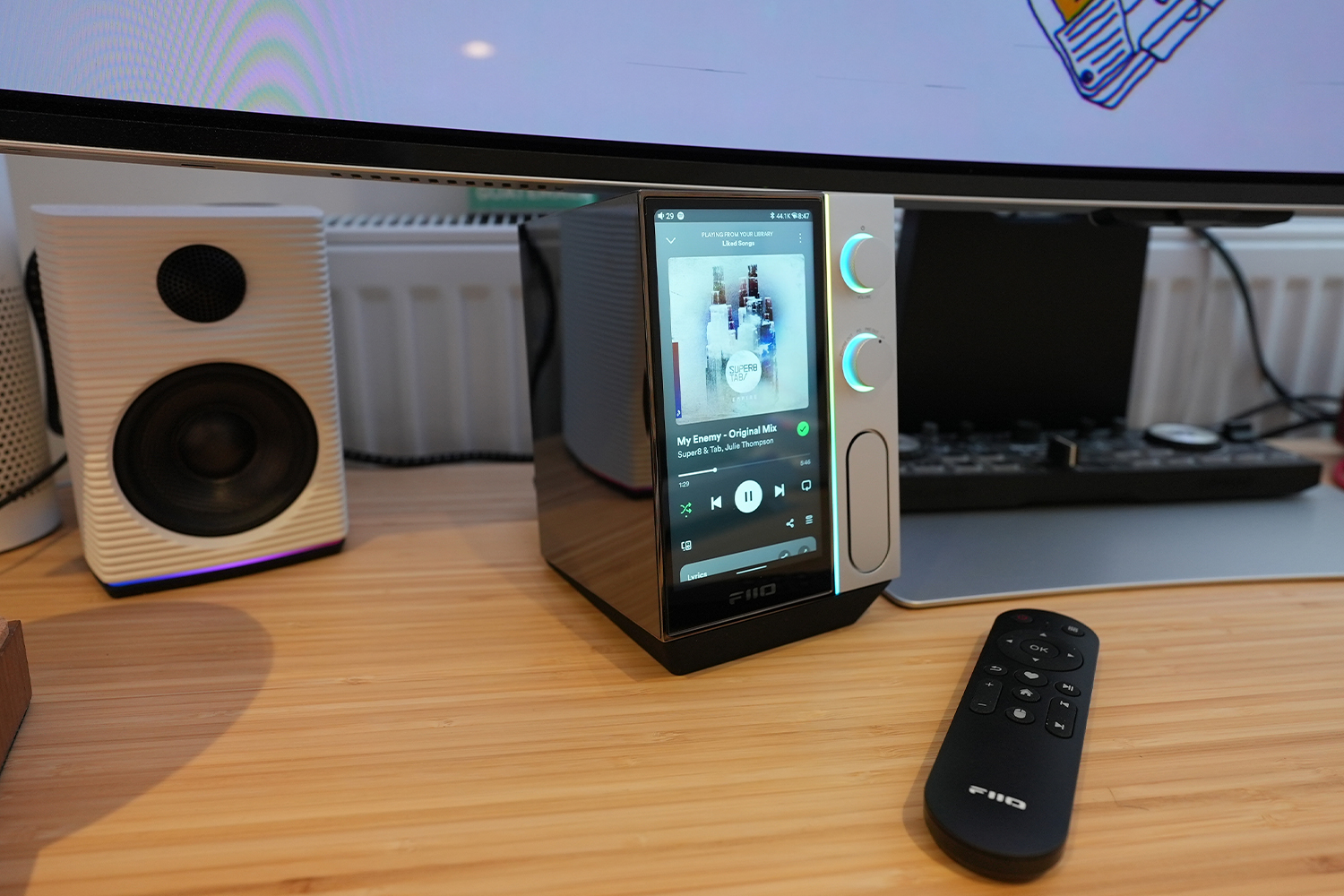
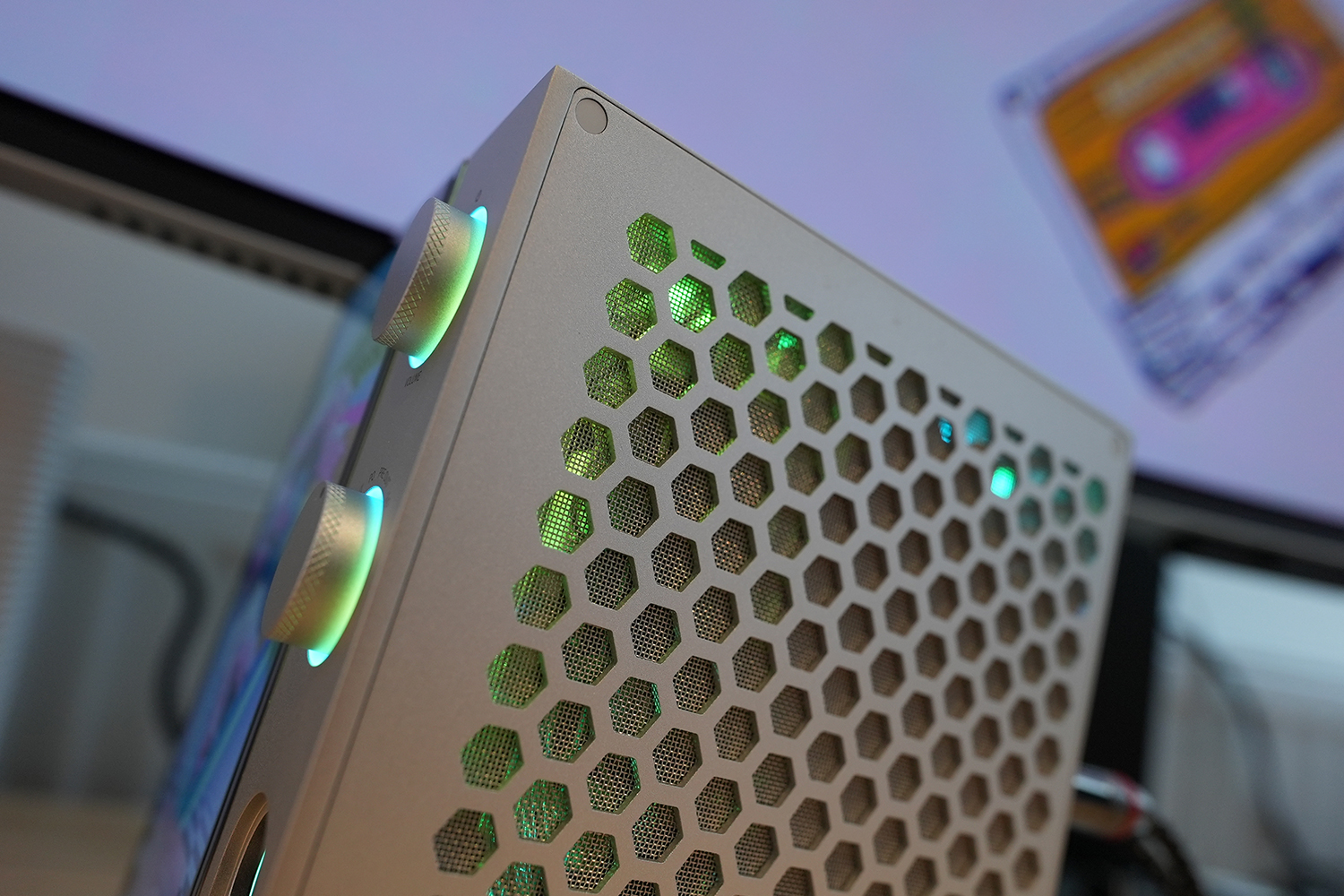
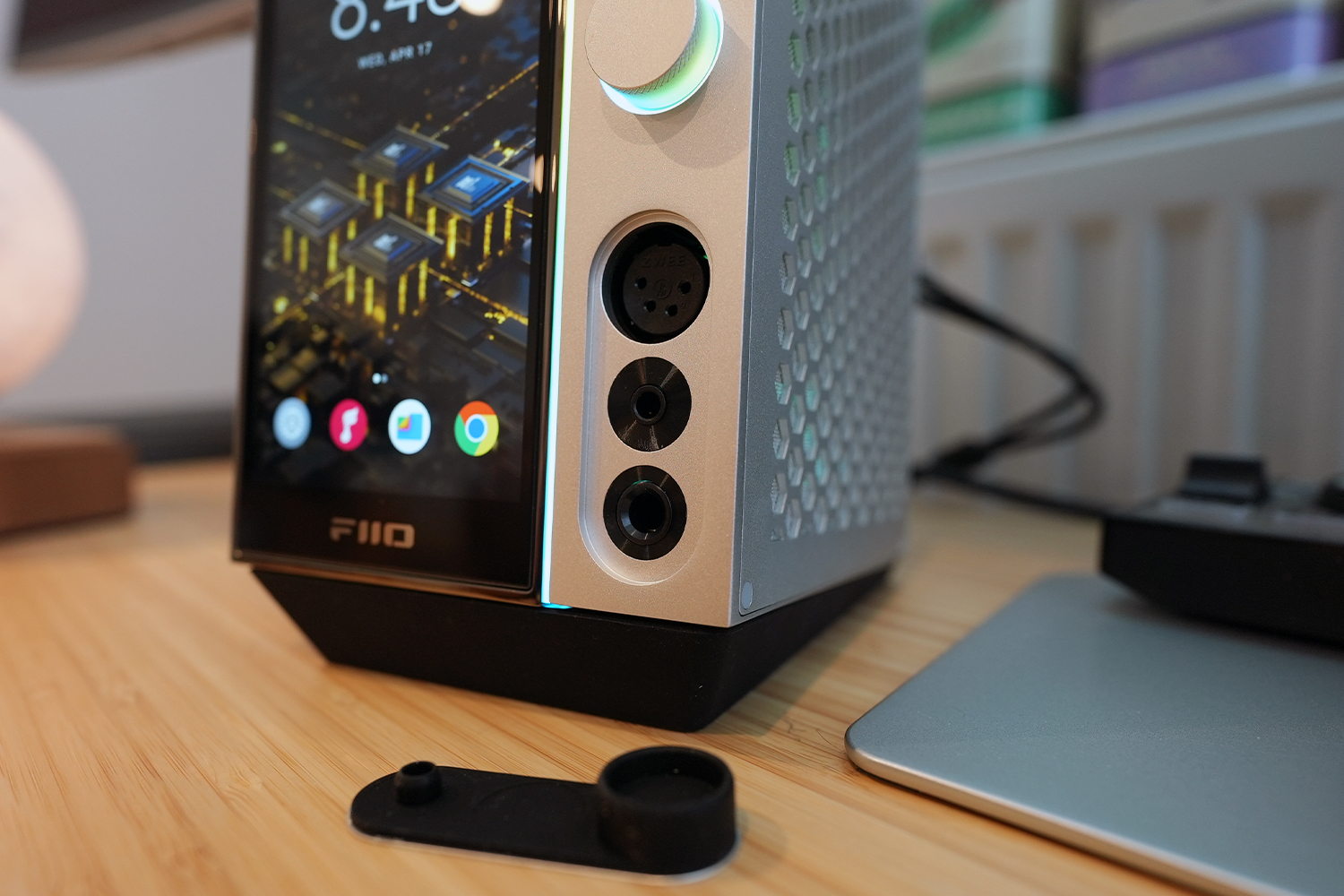
With its aluminium and glass finish, honeycomb ventilation, large 6in touchscreen, and sliver of RGB lighting, the FiiO R9 is a covetable bit of kit. Freeing it from the confines of its box, I was struck by its density and premium-feeling sturdiness — both of which go some way to justifying its lofty asking price.
Measuring in at a mere 160x115x127mm, pictures don’t do justice to the R9’s compact size. Designed to live on your desk, its diminutive stature, combined with its runway looks, make for a device that you’ll be proud to leave on full display. The mirrored finish, as you’d expect, is an absolute fingerprint magnet, but once you’ve set it in situ, there’s no real reason to soil it with your grubby mitts. It does pick up a fair bit of dust, mind, so a light wipe every now will help it retain its pristine looks.
The power/volume knob and output dial are pleasantly knurled and solidly set, with a very satisfying level of clicky, tactile action to them. Combined with either of the two rubber base wedges (which angle the unit upwards to varying degrees), the FiiO R9’s design is a carefully considered triumph.
The RGB illumination, which is limited to a thin vertical strip and around the two front knobs, is a welcome touch too. It can, of course, enter gaudy territory rather quickly depending on your personal preferences, but you can easily turn it off entirely or customise the patterns and colours via the settings, which should please everyone from stoic RGB haters to rainbow unicorn rave lovers.
Lastly, unlike the more mainstream FiiO R7, the R9 comes with a handy remote. It’s a rounded, plastic affair, that offers an easy way to control things if you’re away from your desk. FiiO also has a smartphone companion app which does the same, so it’s nice to have multiple options.
Connectivity and features: All the things
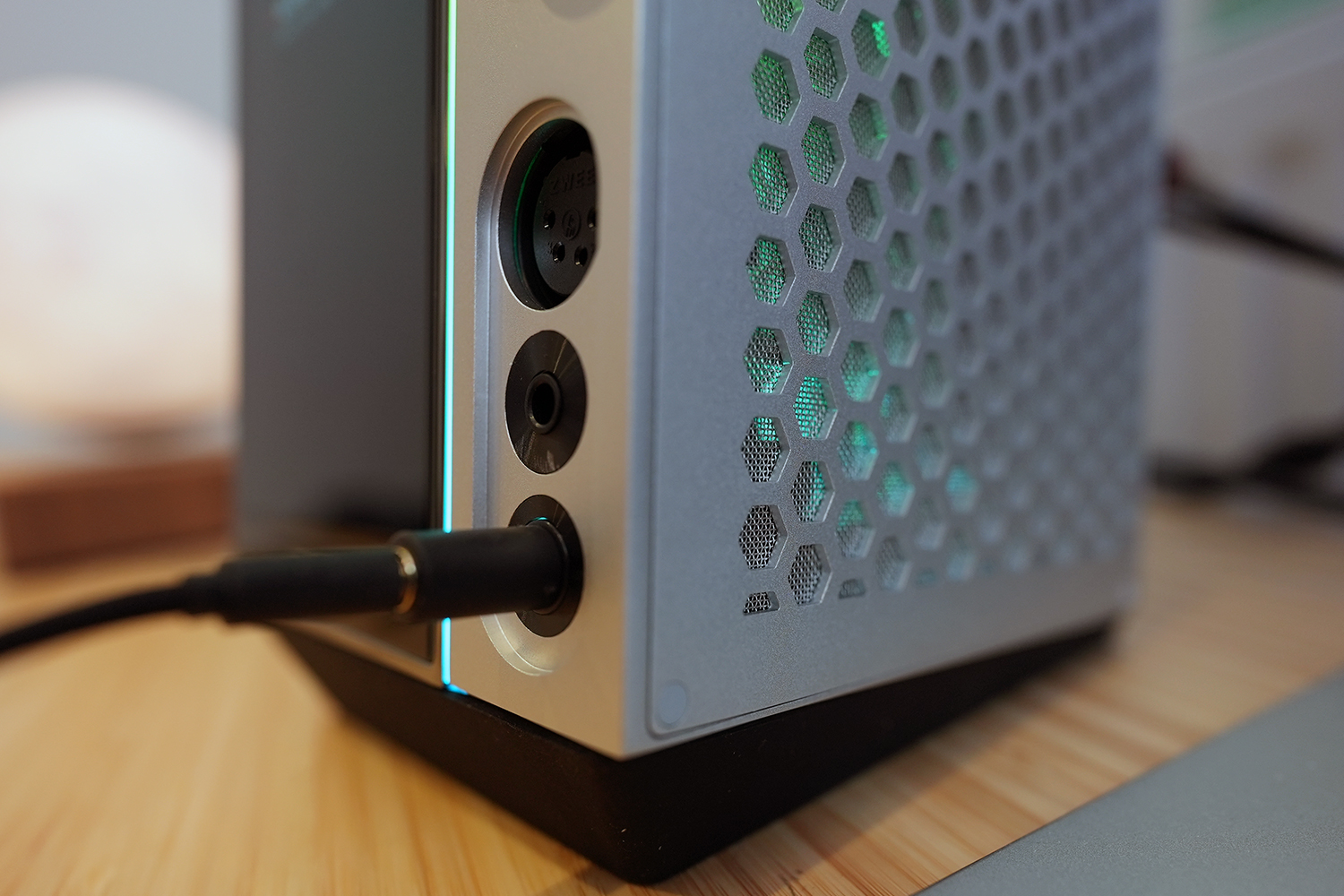
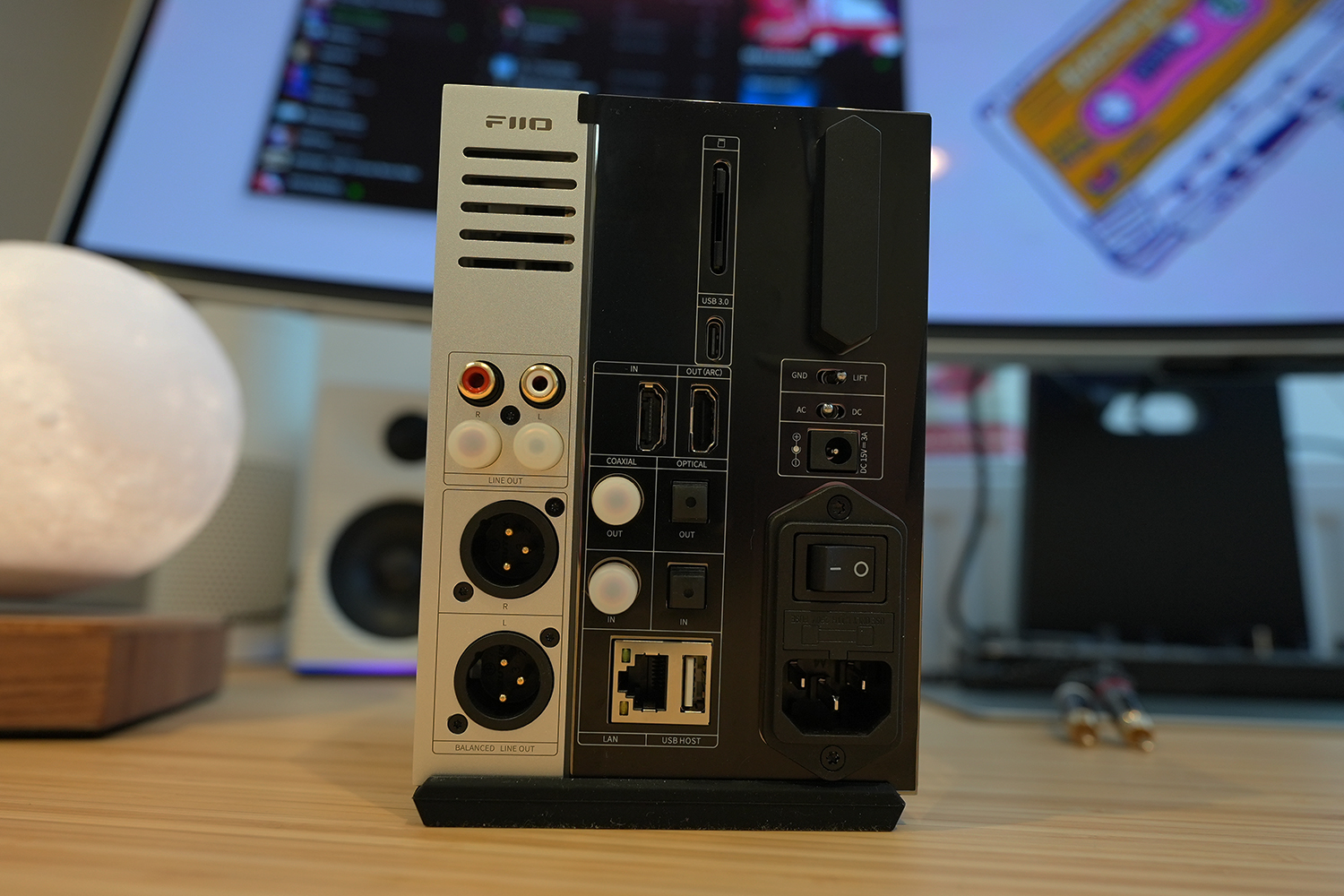
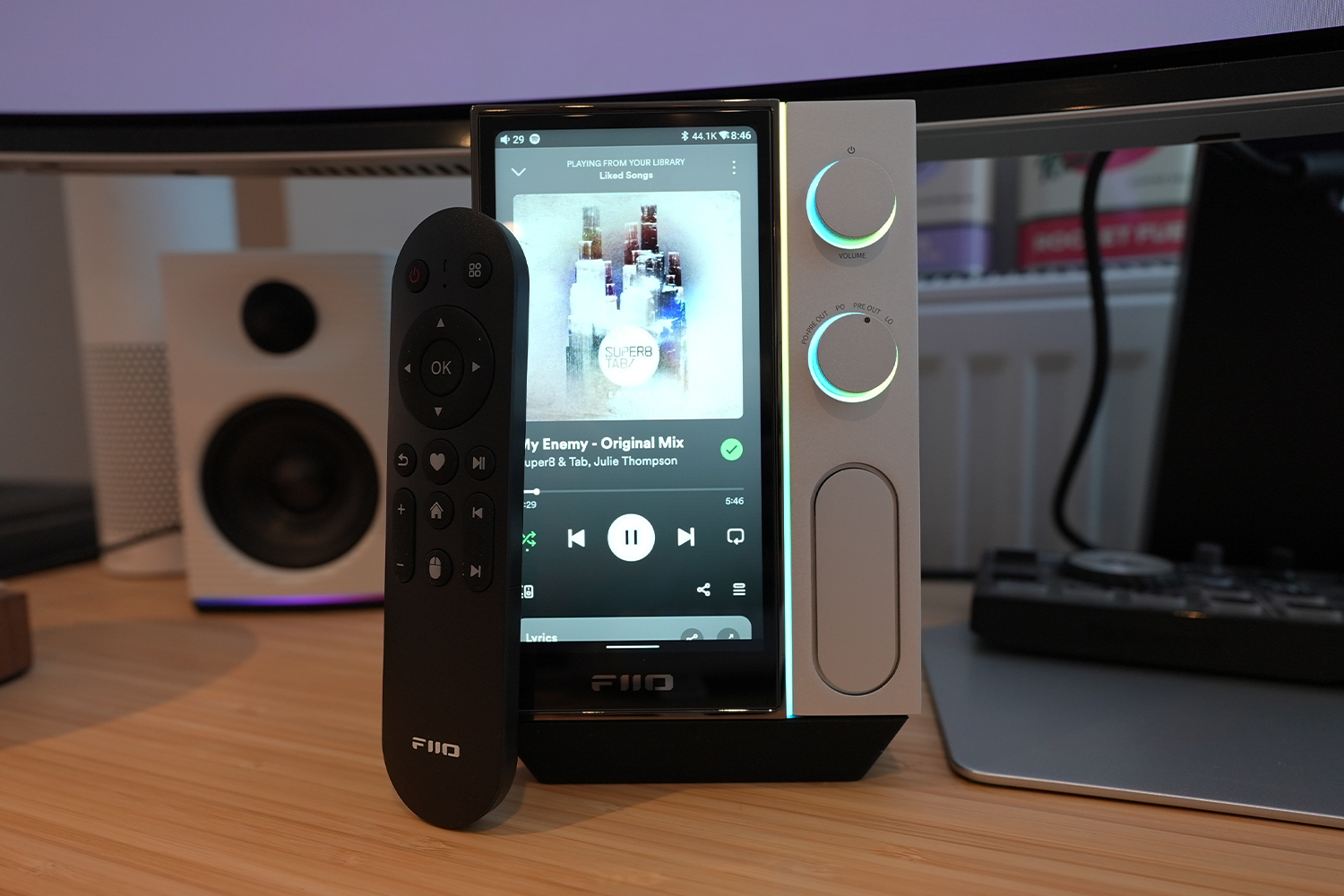
The FiiO R9’s feature and input/output list is so substantial, it’s almost more useful to note one of the only things the R9 can’t do: directly power passive speakers. Otherwise there’s little else it doesn’t cover.
Powered by Qualcomm’s Snapdragon 660 processor, the FiiO R9 is practically a solid mid-range Android handset in its own right, letting you make use of all the streaming apps you could ever want. Everything from Tidal and Spotify, to YouTube Music and more are all available to download from the Google Play Store, and the experience is exactly the same as a proper smartphone.
A Pure Music mode simplifies things by serving up FiiO’s dedicated music app for local/network media playback, away from the Android UI. This can include anything from a connected network drive to a plugged-in USB drive/stick, or micro SD card, as well as anything you’ve downloaded directly onto the internal 64GB storage.
It can be hooked up to a smartphone, laptop, PC, or tablet via USB-C to act as a dedicated DAC, greatly improving their sound in the process (more on that in a bit), supports aptX Adaptive and LDAC high quality codecs if you’d rather stream directly via Bluetooth, and has AirPlay for wireless playback via iOS devices. Roon support means audiophiles can easily integrate it into a multi-room setup.
Swapping between the modes is as easy as pressing the power button for a second or so, and selecting the mode from the on-screen selection. Only one mode can be activated at any one time.
As for inputs and outputs — there are plenty. Round the front, you’ll find a 4-pin XLR output, 6.35mm headphone output, and a 4.4mm balanced headphone output. These are all hidden beneath a removable pill-shaped cover which pops on and off easily, blending in nicely when in use.
Round the back, you’ll find *deep breath* two RCA line outs, a 3-pin XLR balanced line out, coaxial in and outputs (for acting as a high-end audio decoder), optical in and outputs, an Ethernet port, USB host, a USB 3 port, microSD card slot and even a pair of HDMI ports. These can handle video and audio inputs from PCs, consoles and media players, with HDMI ARC for 4K/60Hz passthrough. It makes the R9 a great way to upgrade your TV audio experience, when used in conjunction with active speakers or a soundbar.
An AC/DC power switch to let you swap between each type of power supply (there are connections for both), and a ground switch can be used to help eliminate any buzzing or interference, if any is present. There wasn’t for me.
Performance: music to your ears
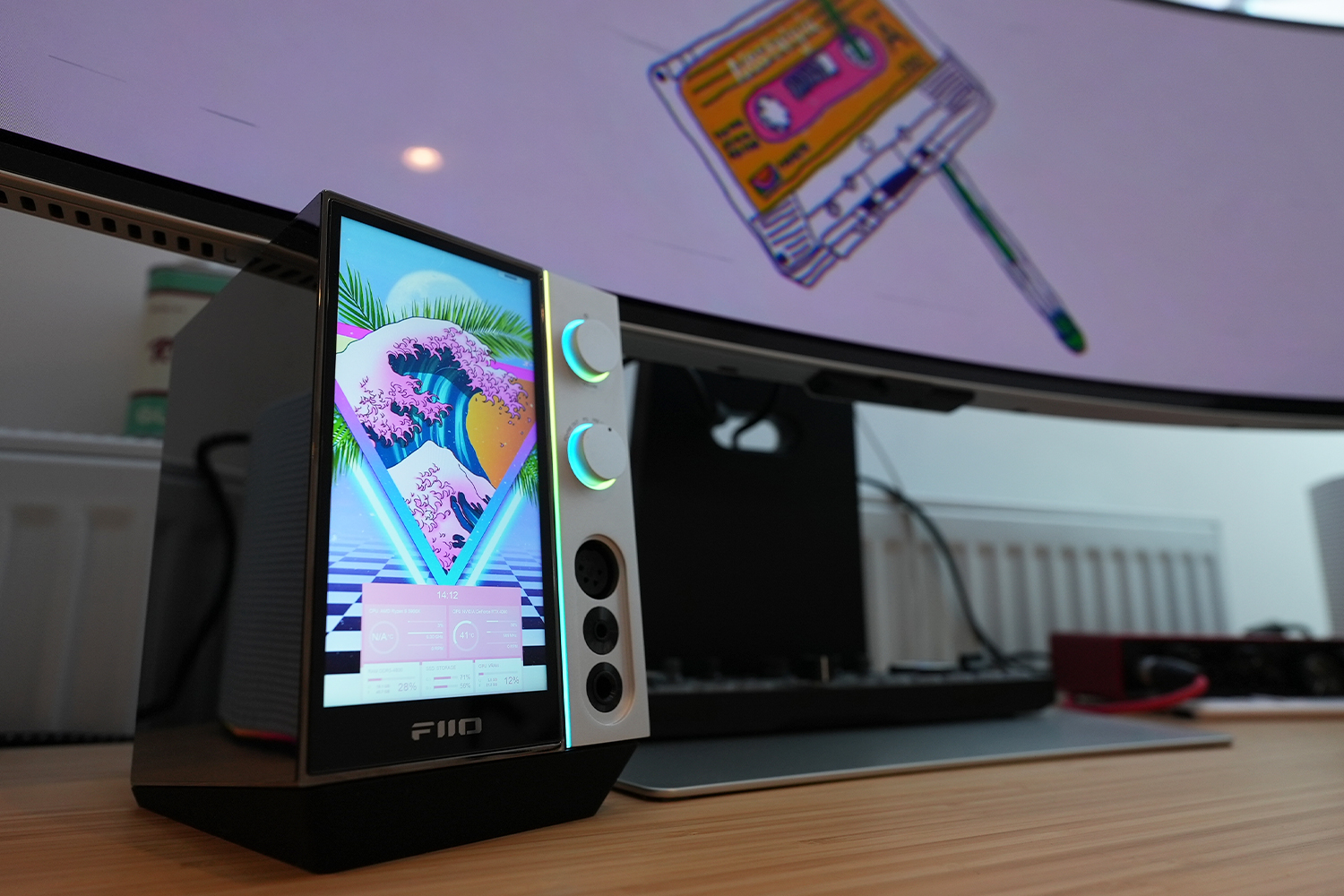
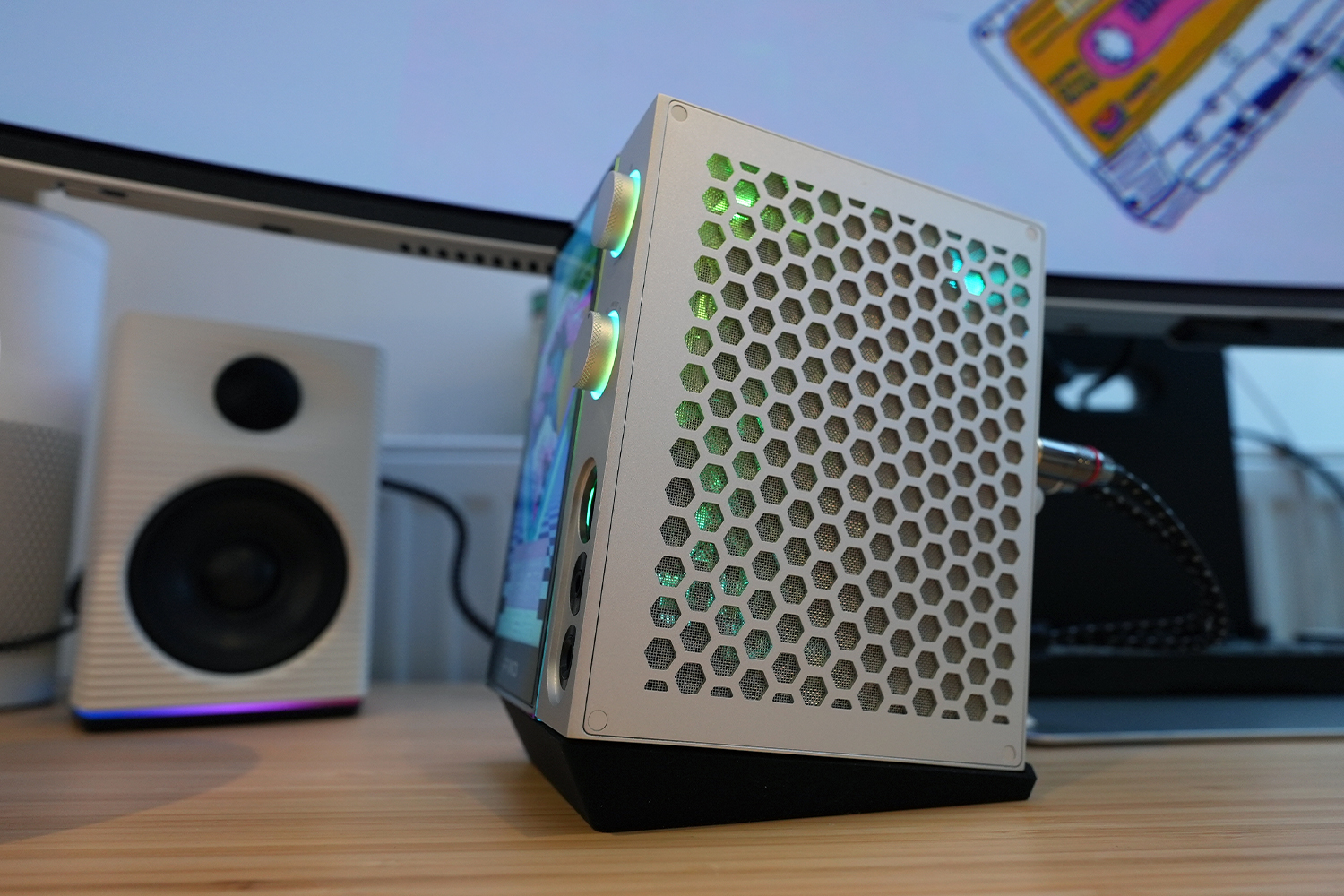
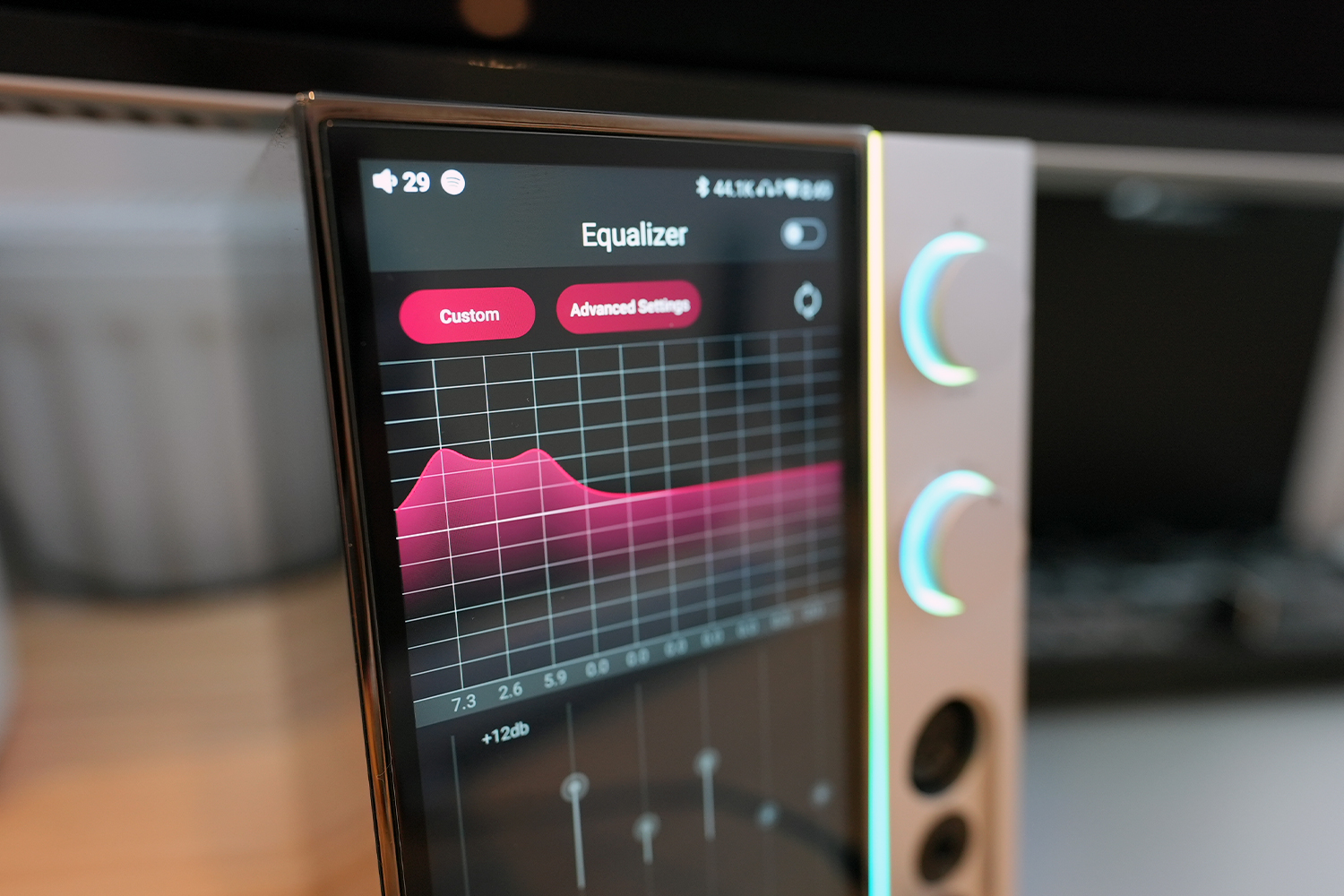
In short, the R9 covers practically all bases. During my time with it, I’ve had it set up on my desk, connected to my PC via USB-C, and in turn, hooked up to FiiO’s own miniature SP3 desktop speakers via the RCA line outputs. The SP3s are the perfect pairing to the R9. In fact, they were practically made for each other, sharing a similar futuristic design and small footprint, making for a tiny but mighty desktop setup.
For a more personal listening experience, I’ve been running a pair of high-end over-ear headphones via the 4.4mm balanced headphone output. In terms of sources, I’ve used a combination of Spotify directly via the Android app on the R9, along with general PC audio for general music, videos, and gaming, plus some FLAC files.
I’ve also been using the R9 to display my PC specs such as CPU temp and RAM usage (I’m into that sort of thing) by mirroring a second desktop screen to the R9 via an Android app. It would be amazing if this could carry over to USB-DAC mode, because as things stand, the R9 can only run one mode at a time.
There’s an impressive stack of hardware underneath its aluminium shell, with an eight-channel THX AAA-788+ onboard headphone amplifier and dual eight-channel ESS Sabre ES9038PRO DACs. The latter is a seriously formidable inclusion, given that the ES9038PRO is one of the best DACs currently on the market. It’s also found in FiiO’s FiiO K9 PRO desktop/headphone amplifier (RRP £700), and top-end M15S Digital Audio Player (RRP £980). Combined with all the other bells and whistles FiiO has managed to cram into the R9, that £1400 asking price begins to make quite a bit of sense.
But enough about specs, bullet points, and fancy numbers. How does the R9 actually sound? In a word, brilliant. No matter what I threw at it, it met all challenges and surpassed them with ease. Firstly, in USB DAC mode, my PC audio experience has been completely transformed. Even tracks via Spotify (a service that most hardcore audiophiles would shudder at the mere mention of) sounded superb. Cranking everything up to levels beyond those I’d comfortably listen to for fear of damaging my eardrums, the R9/SP3 speaker combo handles everything without breaking a sweat.
Tracks from all manner of genres are presented with precision and a wonderful level of crispness. Wolf People’s Kingfisher, for example, is a particularly challenging track with numerous instrumental layers, harmonies, and effects, which often muddy together on lesser hardware. In this case however, every detail from fingers gliding on strings to tight high-hat bombardments are all present and accounted for, with a wonderful sense of open space thrown in for good measure.
Vocal-heavy tracks are served up with haunting clarity too — I found myself listening to Agnes Obel’s Riverside numerous times throughout my testing, closing my eyes and getting lost in the raw, sheer presence that the R9 manages to pump out. And, at the risk of geeking out a little too much, there are some choice tracks from the Baldur’s Gate 3 soundtrack (namely, Weeping Dawn, I Want To Live, and Harpy Song), which practically transported me to the wildlands of Faerûn during my listening session. On that note, everything from games and YouTube, to Netflix and more, simply sound better. Fuller. More refined. Better yet, thanks to its upgraded innards (specifically, an XMOS XU316 16-core 3rd-gen processor), the R9 doesn’t suffer from the audio latency that affected the R7 in USB-DAC mode.
This exceptional performance carries over to Android mode, where equally impressive results can be found simply via streaming apps like Spotify, running directly on the R9 itself. Hooking up a pair of high-end headphones to the front balanced output results in an even more immersive experience. From assaulting my ears with hype-inducing tracks like Electric Callboy’s Pump It, to melodic trance and smooth jazz, I found myself simply sitting and listening without pause — an activity I seldom find myself partaking in. I’m pleased to report that the convenience of Bluetooth doesn’t result in a noticeable drop in quality either — at least over the aptX Adaptive headphones I tried. Naturally, you can tweak everything with meticulous levels of obsession in the built-in equaliser as well.
FiiO R9 verdict
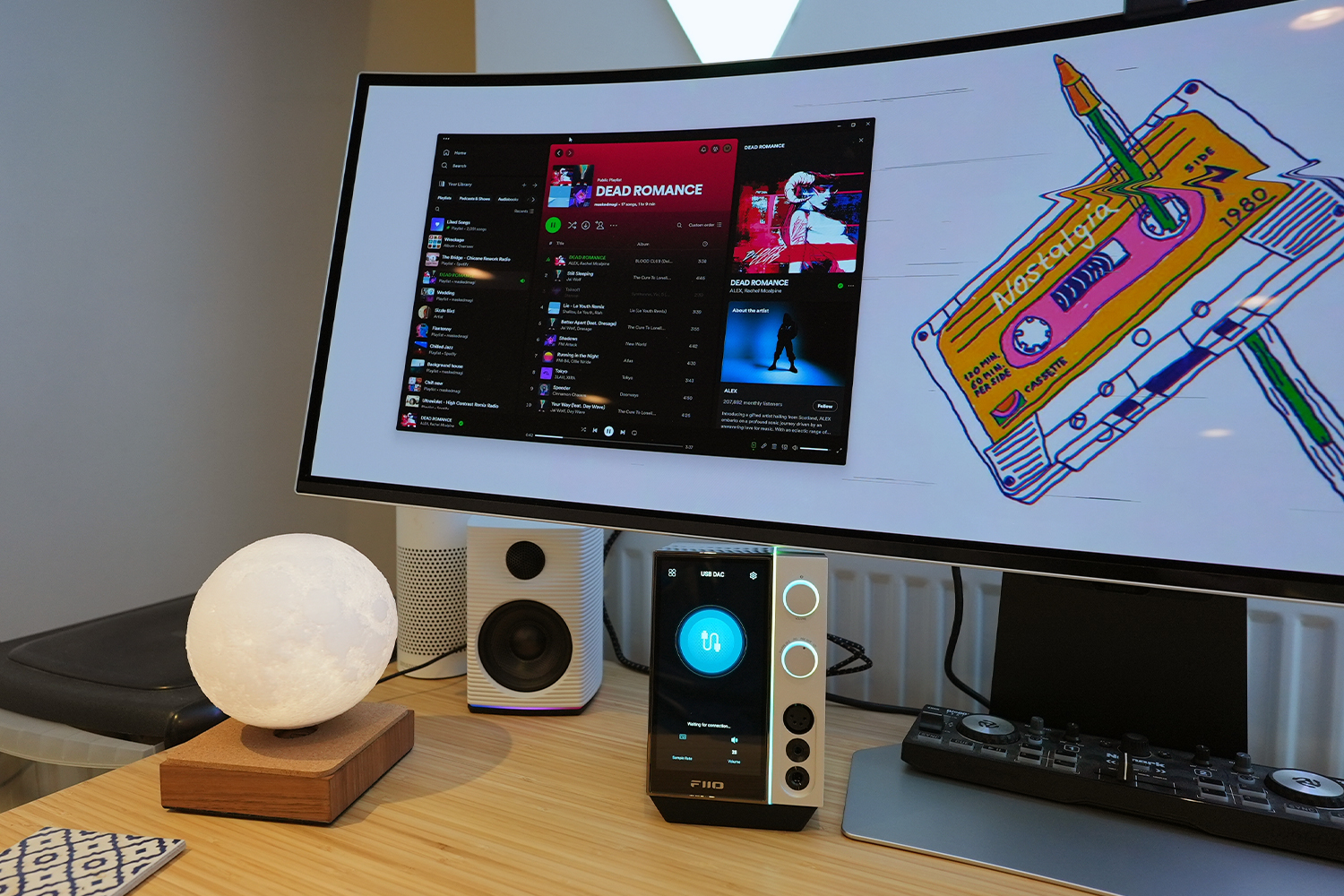
The FiiO R9 is far from cheap, but there’s also nothing else quite like it. Its flexibility and feature set are second to none, and this, combined with its exceptional audio chops, premium compact build, and slick interface, makes it easy to recommend to audiophiles with a suitable budget and a genuine need for its plethora of features.
You could, of course, save your cash by springing for something simpler like a desktop/headphone amp — especially if full-blown Android on a touchscreen is beyond overkill for your needs. For a very specific set of power users though, the FiiO R9 will delight and amaze in equal measure.
Stuff Says…
A superb, do-it-all audio powerhouse that sounds as good as it looks
Pros
Premium, compact design
Rich, crisp, balanced, and detailed sound
Rammed with features and connectivity options
Cons
May be more features than you need
Can’t power passive speakers
FiiO R9 technical specifications
| Dimensions | 160 x 115 x 127mm, 2271g |
| Headphone amplification | 7.3W |
| Screen | 6in, 2160 x 1080 LCD |
| OS | Android 10 |
| RAM | 4GB |
| Onboard storage | 64GB |
| Wireless connectivity | 2.4GHz/5GHz Wi-Fi, Bluetooth 5.0 (LDAC, aptX Adaptive, aptX LL, aptX HD, aptX, AAC, SBC), 768kHz/32-bit hi-res audio, Tidal Connect, DSD512, MQA, Roon-ready |
| Wired connectivity | 6.35mm, 4.4mm and 4-pin XLR headphone ports, 3-pin balanced XLR line out, 2x RCA line outs, coaxial in/out, optical in/out, HDMI in, HDMI out (ARC), USB host, USB-C |


